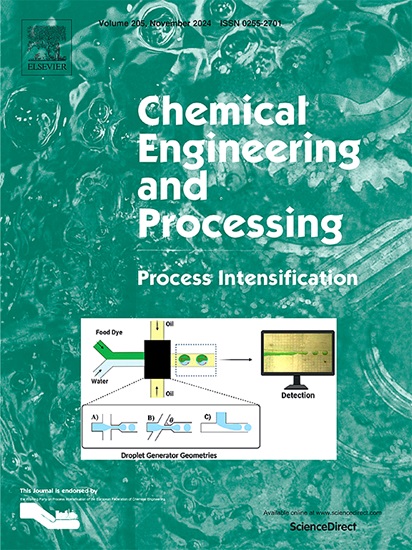Development of 3D-printed electrodes using polyacrylonitrile/ graphene composites for application in polysulfide bromide flow battery
IF 3.8
3区 工程技术
Q3 ENERGY & FUELS
Chemical Engineering and Processing - Process Intensification
Pub Date : 2025-02-15
DOI:10.1016/j.cep.2025.110233
引用次数: 0
Abstract
The performance of Polysulfide Bromide Flow Batteries (PBS) is depended on the design of the electrodes, which plays a crucial role in ensuring optimal electrolyte distribution and conductivity. These factors are essential for facilitating efficient electrochemical kinetics. This study introduces a novel approach to electrode fabrication using polyacrylonitrile/graphene composites through 3D printing, which enhances structural uniformity and electrical conductivity. The incorporation of reduced graphene oxide, with an electrical conductivity of 23 S/m, into polyacrylonitrile-based electrodes substantially improves their electrical conductivity. Unlike traditional techniques that produce randomly oriented fibers, 3D printing offers precise control over electrode architecture. This enables uniform electrolyte flow, improved mass transfer, and increased electrolyte diffusion across the electrode surface. The precise architectural design ensures that the electrolyte's retention time is aligned with its inert properties and optimizing the electrochemical process. One of the two 3D-printed electrode designs exhibited a diffusion coefficient of 73.85 × 10-13 m2/s. This research not only overcomes the limitations of traditional electrode fabrication techniques but also highlights the potential of advanced 3D printing technologies in the creation of next-generation flow battery electrodes. The findings from this study could pave the way for the development of more efficient, durable, and scalable energy storage systems.

聚丙烯腈/石墨烯复合材料3d打印电极在聚硫化溴液流电池中的应用
聚硫溴化物液流电池(PBS)的性能取决于电极的设计,电极在确保最佳电解质分布和电导率方面起着至关重要的作用。这些因素对于促进高效的电化学动力学是必不可少的。本研究介绍了一种利用聚丙烯腈/石墨烯复合材料通过3D打印制造电极的新方法,该方法提高了结构均匀性和导电性。将电导率为23 S/m的还原氧化石墨烯掺入聚丙烯腈基电极中,大大提高了其电导率。与生产随机定向纤维的传统技术不同,3D打印提供了对电极结构的精确控制。这使得均匀的电解质流动,改善了传质,并增加了电解质在电极表面的扩散。精确的结构设计确保了电解质的保留时间与其惰性特性相一致,并优化了电化学过程。其中一种3d打印电极的扩散系数为73.85 × 10-13 m2/s。这项研究不仅克服了传统电极制造技术的局限性,而且突出了先进的3D打印技术在制造下一代液流电池电极方面的潜力。这项研究的发现可能为开发更高效、更耐用、更可扩展的储能系统铺平道路。
本文章由计算机程序翻译,如有差异,请以英文原文为准。
求助全文
约1分钟内获得全文
求助全文
来源期刊
CiteScore
7.80
自引率
9.30%
发文量
408
审稿时长
49 days
期刊介绍:
Chemical Engineering and Processing: Process Intensification is intended for practicing researchers in industry and academia, working in the field of Process Engineering and related to the subject of Process Intensification.Articles published in the Journal demonstrate how novel discoveries, developments and theories in the field of Process Engineering and in particular Process Intensification may be used for analysis and design of innovative equipment and processing methods with substantially improved sustainability, efficiency and environmental performance.

 求助内容:
求助内容: 应助结果提醒方式:
应助结果提醒方式:


